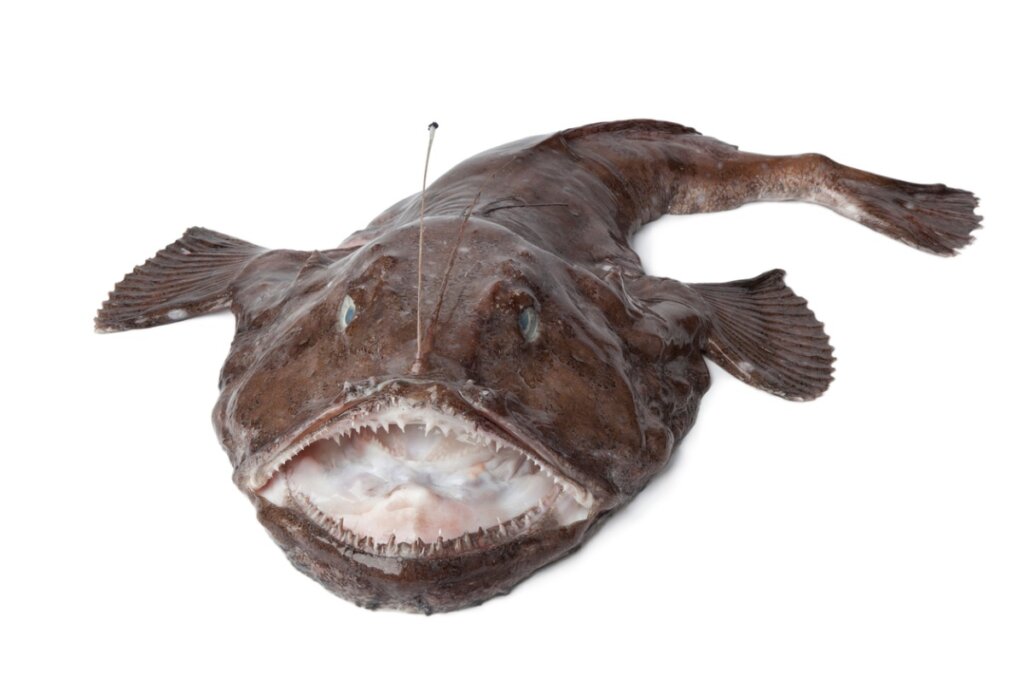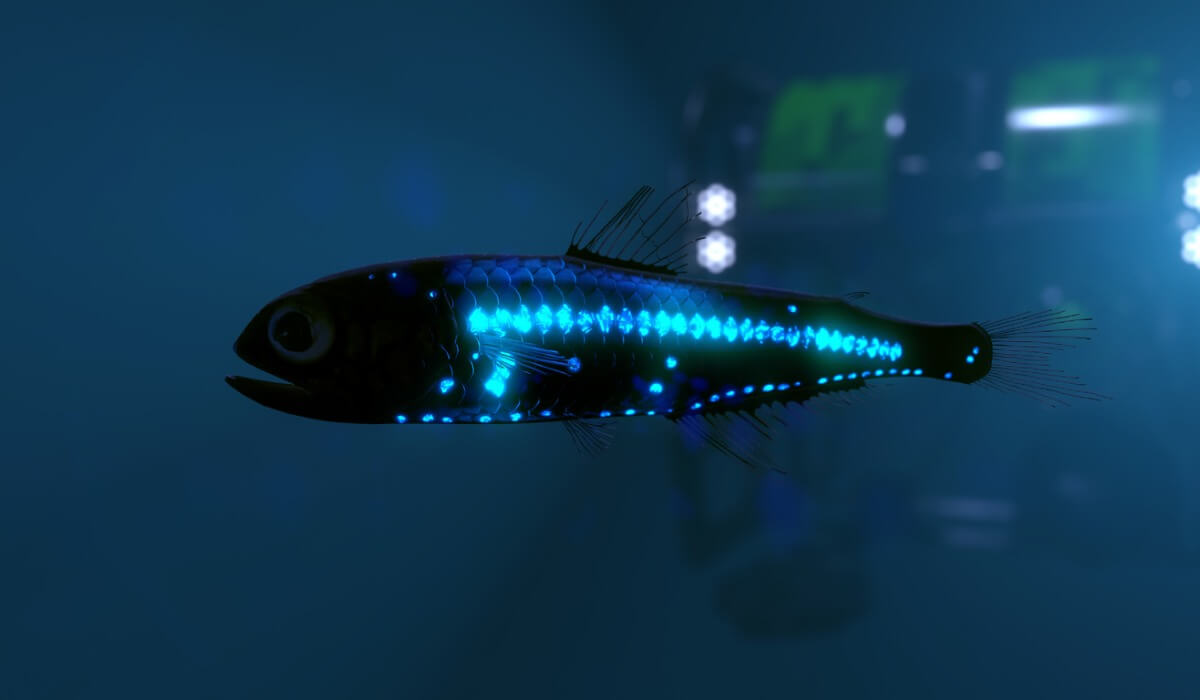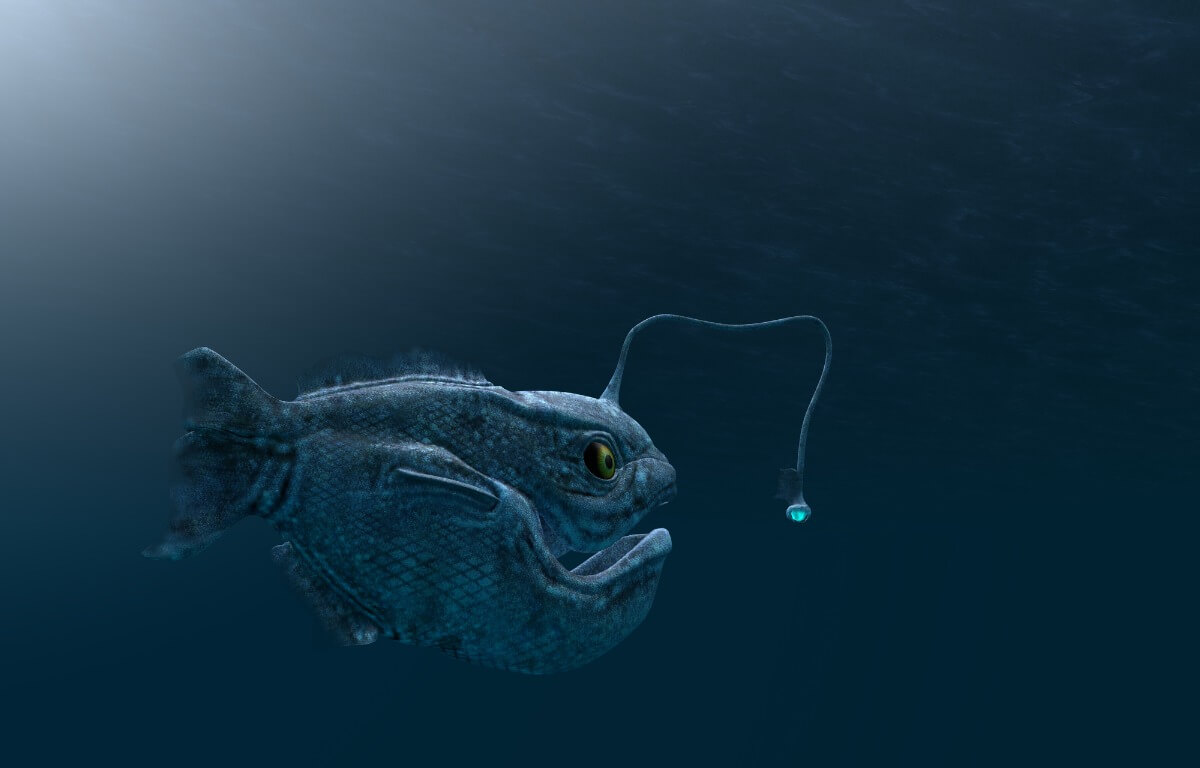Abyssal Fish, Incredible Sea Creatures

Abyssal fish have developed different adaptations over time to take advantage of the limited resources available to them.
However, many of these works of evolutionary engineering are only recognized for their monstrous appearance. Did you know that abyssal fish have much more interesting characteristics than just their strange shapes? We’ll tell you all about it here.
How do deep-sea fish survive?
First of all, it’s necessary to explain what abyssal fish are and their characteristics. Curious as they are, they’re often misnamed as the “monster fish.” Stay with us as we tell you all about them.
1. Abyssal fish inhabit the abyssal zone and are recognized by their appearance
The abyssal fish are those that inhabit the abyssal zone of the sea bed, which is between 100 meters (330 feet) and 4000 meters (13000 feet) deep. This depth conditions their life, as they’re exposed to very specific and limiting factors, such as the following:
- The absence of sunlight
- The absence of plant organisms
- High pressures
- Low temperatures
- Low CO2 concentrations
2. Renowned for their looks
When exposed to these circumstances, the fauna of the abyssal zone has developed different adaptation mechanisms. The modifications in its cell membrane, unique metabolic rates, and buoyancy mechanisms stand out.
Despite having adapted so well to this harsh environment, they’re best known for their appearance, as most species have a ‘monstrous’ appearance. Their bodies normally feature a series of characteristics, such as the following:
- Small size: Although some specimens may suffer gigantism, they are usually quite small
- Small eyes and large sharp teeth.
- Highly developed gills: Due to the conditions of low dissolved CO2 in the water, the gills of these fish must take full advantage of the conditions they find themselves in.
- Large stomach.
According to experts, the physical appearance of these animals is adapted to the extreme living conditions of the depths. For this reason, they usually have strange shapes, but these allow them to make the most of the resources, as they don’t know when they’ll get their next meal.

3. Deep-sea fish withstand high pressures and low temperatures
Just as our body adapts to pressure to avoid being crushed by weight, the same happens with deep-sea fish. However, they’re exposed to high pressures, which increase exponentially as depth increases.
In addition, these living beings also face temperatures that hardly exceed 5º C (41 degrees F), as sunlight doesn’t reach this area. Despite these adverse conditions, there are various forms of life in addition to deep-sea fish, such as bacteria.
4. Their sense of smell is highly developed, as opposed to their sight
Due to the absence of light, one of the distinctive features of these fish is their eyes. Normally, these organs can be small or underdeveloped, and many species are blind.
However, species with large eyes have also been described, and so we can’t generalize. On the other hand, their sense of smell is highly developed, as this is essential in order for them to feed.
A striking detail of all the species that make up the abyssal fauna is that they are clearly carnivorous. All have adapted their diet to living conditions, but abyssal fish stand out for their jaws, with which they catch and don’t release their victims.
In addition, their large stomachs are extendible and adapt their size to their prey, some of which are the same size as the predator.
5. Bioluminescence and decoys
As mentioned before, in the abyssal zone organisms don’t receive any sunlight. Therefore, among its inhabitants, there are none that are photosynthetic. However, in the range of 200 to 4000 meters (650 to 13000 feet) deep, some living things are capable of producing light.
These are called “bioluminescent organisms” and this phenomenon is called bioluminescence. However, most abyssal fish aren’t bioluminescent on their own, although they can use other light-bearing creatures to lure their victims.
To do this, they establish a symbiotic relationship with bioluminescent bacteria, with which they attract the unsuspecting fish. This is one of their best known hunting strategies, and the clearest example is that of M. johnsonii or the black devil.
Regarding this species, it should be noted that its discovery puzzled scientists, as all the specimens found were female. However, in reality males were attached to females like parasites, thus using size between the sexes as the clearest measure of sexual dimorphism.
6. There are many species of deep-sea fish
Having seen the characteristics of the abyssal fish, we need to mention some examples so that we can visualize them. According to the Census of Marine Life (CoML), the number of specimens that live in an aphotic zone – one without sunlight – could reach up to an intimidating 17,000 species.
Normally, deep-sea fish are located at depths of around 1000 meters (3300 feet). Among the most common specimens of these animals are krill or shrimp. In any case, it should be noted that some species can inhabit depths that exceed 6000 meters (20000 feet).
This region is known as “the area of Hades” and its inhabitants include Eurypharynx pelecanoides or pelican fish, which reaches 8000 meters (26000 feet). Others, such as the Affiliate-finned Slug ( Careproctus longifilis ) live at between 8000 and 9000 meters (26000-30000 feet) below sea level.

An exciting and unknown area
Even today, the deep sea harbors many mysteries, as a significant part of the depths remain unexplored. However, thanks to many researchers, it has been possible to discover different inhabitants – such as deep-sea fish – and expand our knowledge of the places where light is conspicuous by its absence.
There are still many questions regarding the characteristics of these fish. Nature has provided fascinating and incredible details in the living things that are continually being discovered.
All cited sources were thoroughly reviewed by our team to ensure their quality, reliability, currency, and validity. The bibliography of this article was considered reliable and of academic or scientific accuracy.
- La vida en las grandes profundidades. ResearchGate. Accedido el 27 de abril de 2021 en: https://www.researchgate.net/publication/296703226_La_vida_en_las_grandes_profundidades
- Peces de las profundidades. Repositorio geotech.cu . Accedido el 27 de abril de 2021 en: http://repositorio.geotech.cu/jspui/bitstream/1234/1380/3/Peces%20de%20Profundidades%2011-16.pdf